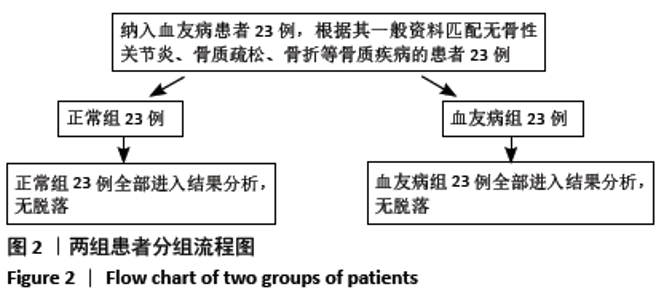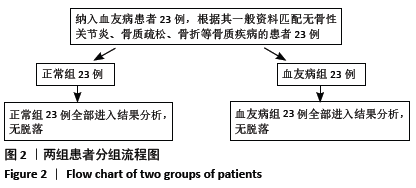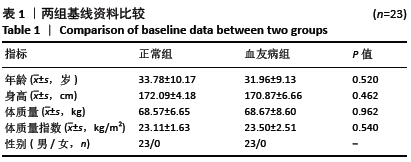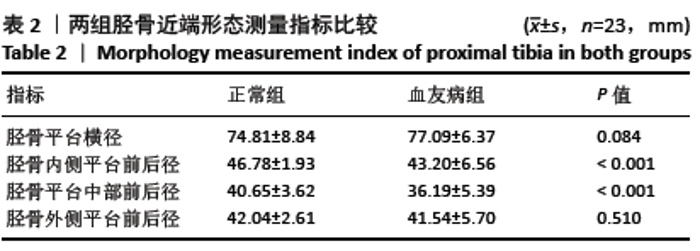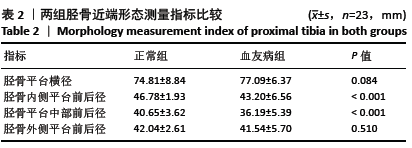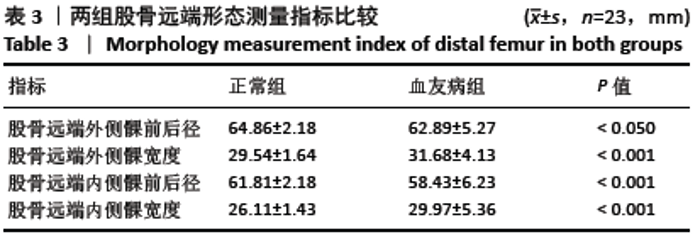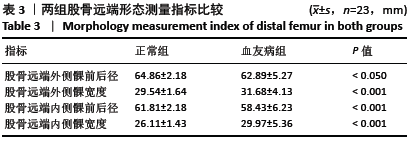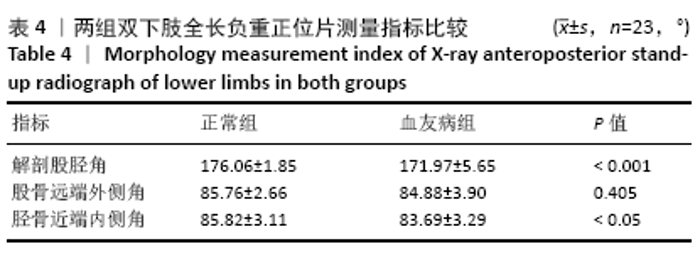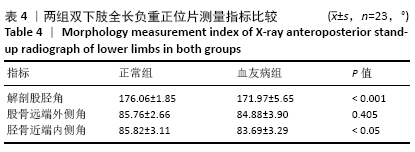[1] SILVA M, LUCK JV JR. Long-term results of primary total knee replacement in patients with hemophilia. J Bone Joint Surg Am. 2005; 87(1):85-91.
[2] THOMASON HC 3RD, WILSON FC, LACHIEWICZ PF, et al. Knee arthroplasty in hemophilic arthropathy. Clin Orthop Relat Res. 1999; (360):169-173.
[3] VALENTINO LA, HAKOBYAN N, ENOCKSON C, et al. Exploring the biological basis of haemophilic joint disease: experimental studies. Haemophilia. 2012;18(3):310-318.
[4] FIGGIE MP, GOLDBERG VM, FIGGIE HE 3RD, et al. Total knee arthroplasty for the treatment of chronic hemophilic arthropathy. Clin Orthop Relat Res. 1989;(248):98-107.
[5] RODRIGUEZ-MERCHAN EC. Methods to treat chronic haemophilic synovitis. Haemophilia. 2001;7(1):1-5.
[6] PATHAK N, MUNGER AM, CHARIFA A, et al. Total knee arthroplasty in hemophilia A. Arthroplast Today. 2020;6(1):52-58.e1.
[7] PANOTOPOULOS J, AY C, TRIEB K, et al. Outcome of total knee arthroplasty in hemophilic arthropathy. J Arthroplasty. 2014;29(4): 749-752.
[8] KJAERSGAARD-ANDERSEN P, CHRISTIANSEN SE, INGERSLEV J, et al. Total knee arthroplasty in classic hemophilia. Clin Orthop Relat Res. 1990;(256):137-146.
[9] LIM HC, BAE JH, YOON JY, et al. Gender differences of the morphology of the distal femur and proximal tibia in a Korean population. Knee. 2013;20(1):26-30.
[10] CHUNG BJ, KANG JY, KANG YG, et al. Clinical Implications of Femoral Anthropometrical Features for Total Knee Arthroplasty in Koreans. J Arthroplasty. 2015;30(7):1220-1227.
[11] RODRIGUEZ-MERCHAN EC. Patient dissatisfaction after total knee arthroplasty for hemophilic arthropathy and osteoarthritis (non-hemophilia patients). Expert Rev Hematol. 2016;9(1):59-68.
[12] CHO HJ, KWAK DS, KIM IB. Morphometric Evaluation of Korean Femurs by Geometric Computation: Comparisons of the Sex and the Population. Biomed Res Int. 2015;2015:730538.
[13] KIM TK, PHILLIPS M, BHANDARI M, et al. What Differences in Morphologic Features of the Knee Exist Among Patients of Various Races? A Systematic Review. Clin Orthop Relat Res. 2017;475(1): 170-182.
[14] PALEY D, PFEIL J. Principles of deformity correction around the knee. Orthopade. 2000;29(1):18-38.
[15] SPRINGER B, BECHLER U, WALDSTEIN W, et al. The influence of femoral and tibial bony anatomy on valgus OA of the knee. Knee Surg Sports Traumatol Arthrosc. 2020;28(9):2998-3006.
[16] CHENG CK, LUNG CY, LEE YM, et al. A new approach of designing the tibial baseplate of total knee prostheses. Clin Biomech (Bristol, Avon). 1999;14(2):112-117.
[17] CHAICHANKUL C, TANAVALEE A, ITIRAVIVONG P. Anthropometric measurements of knee joints in Thai population: correlation to the sizing of current knee prostheses. Knee. 2011;18(1):5-10.
[18] STRAUSS AC, SCHMOLDERS J, FRIEDRICH MJ, et al. Outcome after total knee arthroplasty in haemophilic patients with stiff knees. Haemophilia. 2015;21(4):e300-e305.
[19] HITT K, SHURMAN JR 2ND, GREENE K, et al. Anthropometric measurements of the human knee: correlation to the sizing of current knee arthroplasty systems. J Bone Joint Surg Am. 2003;85-A Suppl 4: 115-122.
[20] LEE IS, CHOI JA, KIM TK, et al. Reliability analysis of 16-MDCT in preoperative evaluation of total knee arthroplasty and comparison with intraoperative measurements. AJR Am J Roentgenol. 2006;186(6): 1778-1782.
[21] INCAVO SJ, RONCHETTI PJ, HOWE JG, et al. Tibial plateau coverage in total knee arthroplasty. Clin Orthop Relat Res. 1994;(299):81-85.
[22] WESTRICH GH, HAAS SB, INSALL JN, et al. Resection specimen analysis of proximal tibial anatomy based on 100 total knee arthroplasty specimens. J Arthroplasty. 1995;10(1):47-51.
[23] RODRIGUEZ-MERCHAN EC, VALENTINO LA. Increased bone resorption in hemophilia. Blood Rev. 2019:6-10.
[24] ALFONSO I, GIANLUIGI F, MAURA M, et al. Bone mineral density in haemophilia patients. A meta-analysis. Thromb Haemost. 2010;103(3): 296-603.
|
